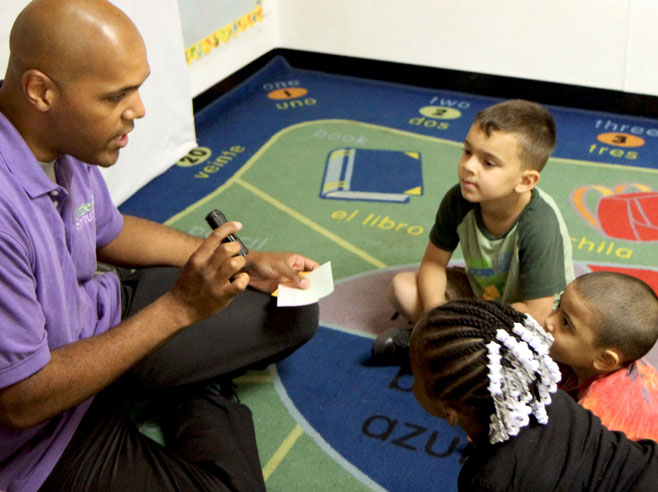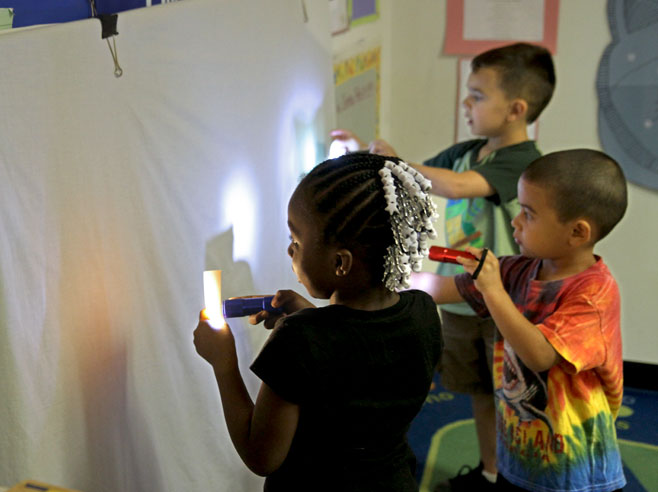As children move a flashlight up and down above a sticky note they are holding, they notice how the size of the shadow changes.
Materials

- 3″ x 3″ sticky notes (1 for each child)
- Flashlight (1 for each child)
- Optional: small objects
Preparation
- Darken the area where you will meet with your small groups, so that shadows made with flashlights can be clearly seen.
Directions: Lessons 5, 6
Guided Small Group
In this activity, children explore how the size of a shadow changes when the light source is moved closer to or farther from the object/blocker.
- Give each child a 3″ x 3″ sticky note and a flashlight. Show children how to use one hand to hold the sticky note about 3 inches above the table. They will hold the flashlight in their other hand.
- Encourage the children to move the flashlight up and down (closer to and farther away from the sticky note) and observe how the size of the sticky note’s shadow changes.
- Have children make a big shadow. Encourage children to notice where they held the flashlight—close to or far from the sticky note. Do all children agree on the answer? Can you make the shadow even bigger?
- Now have children move the flashlight to make the shadow smaller. How did you move the light?
- Have children move the flashlight to make the shadow big again. How did you move the light?
Learning Center
Previously, in the Guided Small Group: Move the Light activity, children used a sticky note and a flashlight to explore big and small shadows.
- Invite children (working individually or in pairs) to explore using small classroom objects and a light to make big and small shadows. Possible discussion ideas:
- How can you make the shadow bigger/smaller?
- What happens to the shadow if you move the light farther from the object? Why does the shadow get smaller?
- What happens to the shadow if you move the object out of the light?
- Model language to describe and compare the shadows children are making.
- Encourage children to listen to and build on each other’s ideas.


